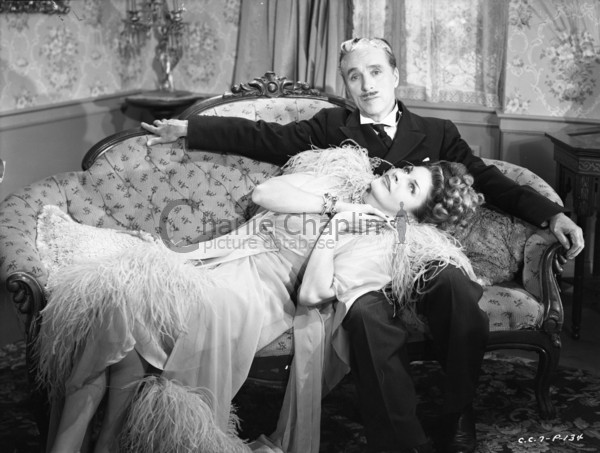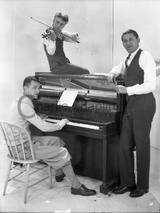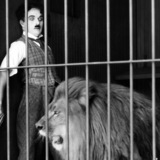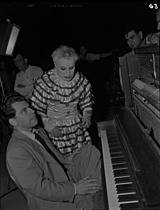Planting the Seeds for Verdoux

Chaplin and Henri Landru: Planting the Seeds for Monsieur Verdoux
by Lisa Stein Haven, May 2006
It amuses me that many critics want to instantly focus on the fact that Charlie’s 1947 film, Monsieur Verdoux seemed to be the perfect vehicle for him at that time, given his lifelong struggle with women and especially his most recent experience in the American legal system with Joan Barry—to include two court cases and several years of stress and character assassination. So, naturally, they say, Chaplin would love doing a film in which he could, fictionally anyway, do away with one or more of those women. It had to have been cathartic. Unfortunately, these critics have missed the point entirely. It was not the killing of women that would have attracted Charlie to this particular story, but the story of the criminal himself. Charlie was a lifelong admirer of what we now call “true crime” stories, as well as their real-life counterparts. Monsieur Verdoux simply allowed him to live out one of these stories on film.
Charlie’s affection for the crime story manifested itself mainly in two ways. First, of course, it made him a fan of the true crime rag. As Charlie Jr. tells us in his book, My Father Charlie Chaplin, Charlie had two beds in his bedroom in the Summit Drive house in Beverly Hills. Charlie, Jr. writes that “my father usually slept in the far bed, the one by the windows. I recall the pulp detective magazines that were always stacked by the bed. My father might read Spengler and Schopenhauer and Kant for edification, but for sheer relaxation he chose murder mysteries” (71).
Second, and well before this incident (before the Summit Drive house existed) was Charlie’s interest in prisons—visiting them, talking to prisoners, that sort of thing. It’s hard to put a date on the start of this particular interest or to point to a specific catalyst. Charles Dickens, perhaps, might be a likely source, since he wrote quite a lot about his own visits of houses of incarceration, such as Newgate prison in London—even making a point of visiting prisons on his two tours to the United States (see American Notes). However he got the idea, the fact is that Charlie engaged in this occupation frequently. He visited Sing-Sing prison in Ossining, New York for the first time in 1921, just after the onset of his first trip back to England since the start of his fame in the States. He recounts the experience a bit for us in My Trip Abroad, but it is perhaps the account of his guide, Frank Harris, in an article in Pearson’s Weekly that is more interesting. Harris relates, for instance, that upon leaving the visitors’ room,
“almost immediately we were taken into a room with heavy muslin curtains; from it you could see into the bare yard, forty or fifty yards long and perhaps fifteen wide; two men were walking up and down; one a tall warder, the other a short man in gray with a pipe in his mouth walking briskly in the sunshine. The head keeper announced shortly: ‘ The next for the Chair.’
How awful! [. . .] Charlie put his hand against his heart, ‘Did you see his face?’ he whispered. ‘As if he were choking down the terrible fear and agony! Tragic, appalling!’” (243)
Other highlights of this tour included meeting Irish radical Jim Larkin and sitting in the electric chair for a few moments. Charlie visited this prison again shortly before his 1931-2 tour, presenting his new film, City Lights, free for the prisoners’ entertainment. While he was in Europe on that tour, he visited prisons in London (Wandsworth Gaol, site of Oscar Wilde’s imprisonment), Venice, and Tokyo, Japan, among others. In Berlin, he compensated himself for not visiting a prison there by touring through the horrifying police museum, an experience he remembers for us in My Autobiography: “Frightening and depressing was my visit to the Berlin Police Museum—photographs of murder victims, suicides, degenerates and human abnormalities of every kind” (387).
While these visits must have sent chills up and down his spine at the time, it was probably the narratives of each particular criminal and the criminal mind itself that was most interesting to Charlie. This is borne out by his comments during a visit to Madame Tussaud’s wax museum in London in the autumn of 1931, where the reporter of an article entitled “Charlie among the Murderers” caught Charlie ambling through the Chamber of Horrors:
“The great comedian’s interest was centered in the early twentieth century murderers. He studied the figures of Crippen and Dougal (of the Moat farm) for a long time, and recalled Deeming. ‘We boys used to shout “Deeming!” after any man whose face we didn’t like in those days,’ he said. A murderer whom Charlie knew was Chapman, the poisoner. ‘He kept a saloon in the Borough,’ he told his guide.”
But why a Bluebeard story at all? And, is Verdoux really the story of Henri Landru? Charlie gives Orson Wells credit for this story idea in a very public way; it appears visibly on the film credits before the film itself begins. But was it really Wells’ idea or did Wells simply re-invigorate an old notion Charlie once had? The evidence would suggest the latter—perhaps because of a coincidence, a small coincidence. This coincidence revolves around the fact that Henri Landru was on trial for having murdered 11 “wives” in September 1921, the same month that Charlie traveled back over to England to undergo his big homecoming tour. Paris, the venue for the trial, was one of Charlie’s destinations as well. So, who were the capturers of the most headlines and the most press during the month of September 1921? Charlie Chaplin and Henri Landru. Perhaps this is not that significant, except that Charlie’s press people collected any and all press cuttings in which his name appeared, and one such instance was a New York Times article dated November 28, 1921 on the Landru trial, entitled “Demands Extreme Penalty for Landru”:
“ ‘Crook, swindler, monster, Bluebeard, Jack the Ripper, murderer without any human sentiment’—these are only a few of the epithets which Prosecutor Godefroy hurled at Landru when he summed up for the State in the little courtroom at Versailles today. He sought at the outset to warn the jury against regarding Landru as a comic figure, as ‘the Charlie Chaplin of the cinema of crime, the genial Guignol, tricking the police and cheeking the Magistrate.’”
With this particular reference, it doesn’t seem like a stretch to think that Charlie would have taken a second look at this figure, at least enough to put it into a mental folder and file it away. This is supported by the information provided by Chaplin biographer George Sadoul in Vie de Charlot who writes that while in Paris in 1931, “he had insisted in meeting with crime reporters present at the Landru trial in order to obtain various details on the matter.” (165). Given his incredibly busy schedule during this trip, why would he make time for this particular activity if he weren’t more than just slightly interested in the story of Henri Landru?
So how much Landru is there in Verdoux anyway? I thought it might be interesting to do enough research to be able to make some comparisons. I’ll simply provide the facts that I found and then you go ahead and make the comparisons, given your expert knowledge of both Charlie Chaplin and his character Henri Verdoux (Henri Verdoux/Henri Landru—now there’s a bit of a correlation already!). Court TV’s crimelibrary.com website provides a lovely five- or six-page report on Henri Landru, which is seemingly well-researched and fairly comprehensive. It mentions that after a promising military career, he married the victim of his first seduction, a cousin, and became a business clerk. Mark Gribben, the author of the Landru pages, writes then that Landru’s “employer, however, was unscrupulous and absconded with the money Landru had given him as a bond, leaving a strong impression on Henri. Incensed with this blow which fate had dealt, Landru apparently made a vow to get “revenge” through a life of crime.”
In addition to his career as a swindler (and, later, murderer), Landru was a part-time used furniture dealer and auto mechanic. He was in and out of jail due to his schemes seven times before he decided upon the idea to marry unsuspecting women for their money and goods in 1908. He met his victims by placing personal ads in newspapers. Gribben notes that “he was probably a romantic man, able to sweep lonely women off their feet, and since his physical appearance was more comical than handsome, he must have been a smooth, fast-talker. His sexual appetite reportedly was ravenous.”
Finally, one victim, Mme. Louise Leopoldine Jaume, “disappeared in September 1917. After her disappearance, Landru’s new neighbors in Gambais noticed black, noxious smoke pouring from his villa.” In fact, Landru’s oven was entered into evidence at the trial, for he had disposed of all his victims by burning their remains—using the “no corpus delicti” defense much like Verdoux. And like Verdoux, Landru was brought to justice at last by the determination of persistence family members of a victim.
So, members of the jury, what is your verdict? Is Monsieur Verdoux just a simple Wellsian tale, based loosely on the Bluebeard fairytale, or did Charlie reach into his attic-like mind and dust off an old idea he’d been considering for more than 25 years?


